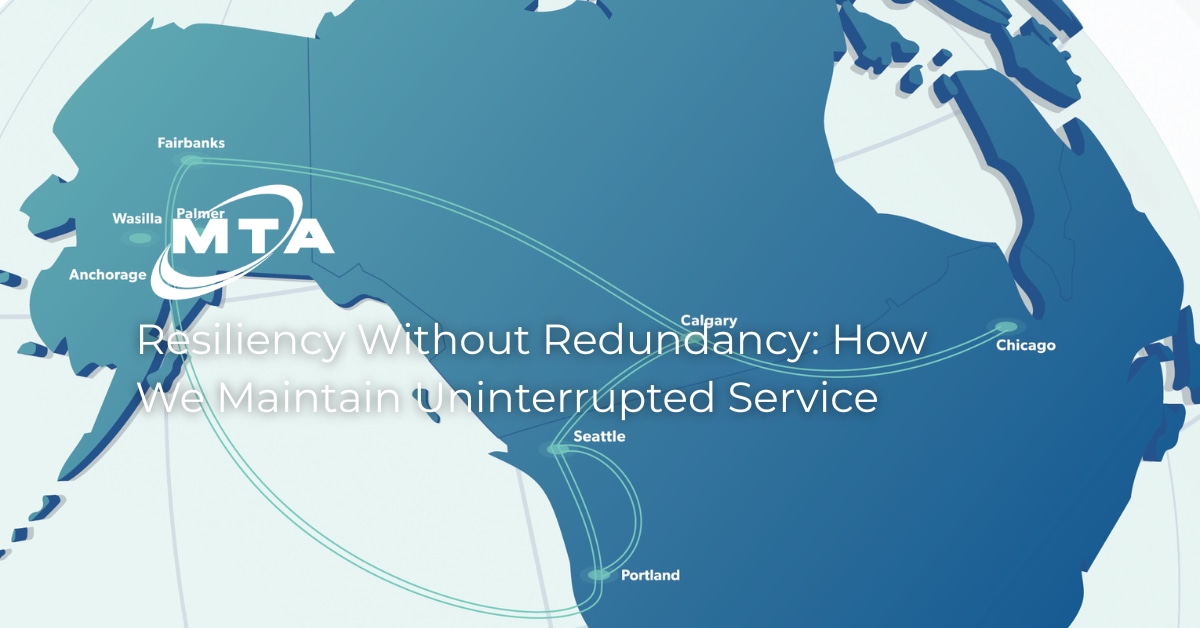
Resiliency Without Redundancy: How We Maintain Uninterrupted Service
In Alaska, staying connected isn’t a convenience—it’s a lifeline. Through collaboration and innovative projects like AlCan ONE, telecom providers are building a more resilient network that keeps Alaskans connected no matter what challenges arise.
Author: Andrew Trotter, Vice President of Carrier and Wholesale at MTA
In Alaska, staying connected is never a simple task. When you're working with vast wilderness, mountains, and frozen ground, creating reliable infrastructure requires a different approach, and a lot of teamwork.
Unlike in many other places, we don’t have the luxury of multiple overlapping networks. That’s why Alaska’s telecom carriers must work together to build systems that keep us connected, even when things go wrong. We share routes, help each other resolve issues, and rely on one another to ensure services are back on their feet as quickly as possible. Here, collaboration isn’t just important, it’s essential.
One of the biggest risks to connectivity in Alaska is the reliance on subsea fiber-optic cables. These cables, which stretch along the ocean floor, are crucial to linking Alaska with the Lower 48. But they’re not without their vulnerabilities. Earthquakes, shipping accidents, or natural wear and tear can cause damage that cuts off service. When that happens, and there’s no backup route, entire communities can be left without connection. It’s a problem that’s emerged throughout Alaska in recent years, particularly in rural areas.
These disruptions are why MTA launched AlCan ONE, Alaska’s first all-terrestrial fiber link to the Lower 48. It provides a critical primary path or backup to subsea routes, offering a reliable, land-based alternative that can keep services going amid even the bleakest of weather situations. (And in the event that a disruption should occur, repair time is just a tiny fraction of that of a subsea cable.)
But it’s not just about MTA. AlCan ONE is part of a broader, collaborative effort across the state, where multiple carriers work together to create a network that’s both robust and resilient. With this cooperative approach, we can quickly reroute traffic, minimize downtime for customers, and ensure no single outage can sever Alaska from the rest of the world.
In Alaska, redundancy is about more than just technology. It’s the difference between staying connected or becoming isolated. Whether you’re attending a telehealth appointment, taking an online class, or simply making a call, reliable service can make all the difference.
Building for redundancy isn’t just smart—it’s vital. And with projects like AlCan ONE, we’re ensuring that Alaska remains strong, connected, and ready for whatever comes next.